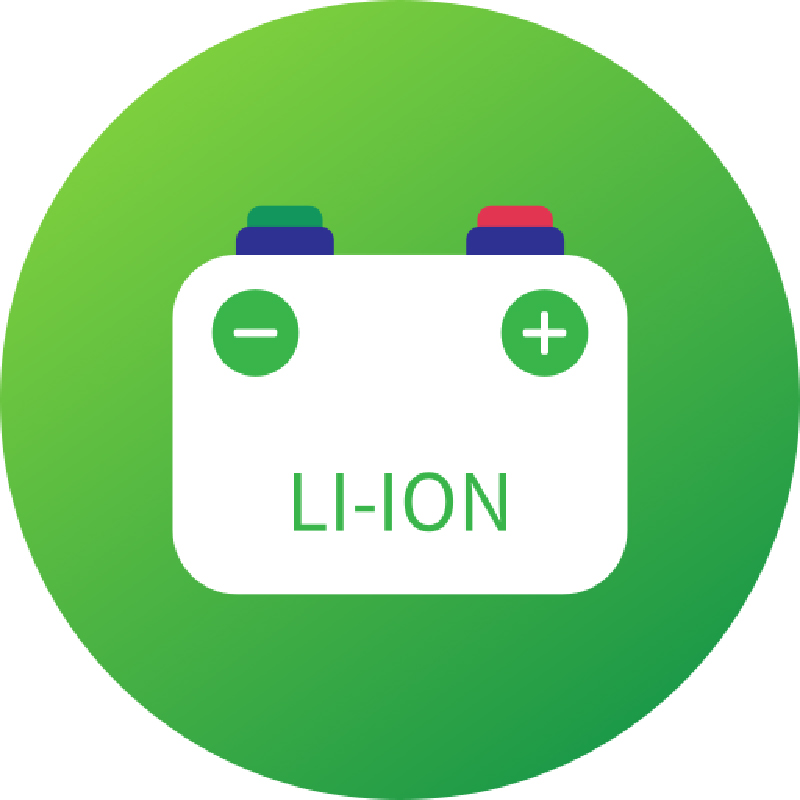In accordance with the European Union’s General Data Protection Regulation (GDPR), we are committed to safeguarding and ensuring your control over your personal data. By clicking “Accept All” you are permitting us to use cookies to enhance your browsing experience, assist us in analyzing website performance and usage, and deliver relevant marketing content. You can manage your cookie settings below. By clicking “Confirm” you are agreeing to the current settings.
What is a high nickel ternary battery?

In recent years, Tesla, as well as battery manufacturers in Japan and South Korea, have been developing "high nickel ternary batteries." By reducing the use of rare metal cobalt and increasing the use of aluminum and nickel, these batteries not only lower costs but also enhance energy density.
Lithium batteries are currently the mainstream choice for electric vehicles, regarded as the "oil" of the new energy era. The demand for lithium batteries has risen with the growth of electric vehicles. However, the pandemic and wars have led to increased prices of metal raw materials and components, driving up the cost of lithium batteries.
As crucial as the heart of an electric vehicle, batteries have become strategic resources sought by governments worldwide, who are actively promoting the self-sufficiency of battery materials and mineral sources. On the other hand, since batteries account for about 40% of the cost of an entire vehicle, battery manufacturers are exploring ways to adjust materials and design to reduce production costs.
Lithium batteries are mainly composed of four major parts: cathode material, anode material, electrolyte, and separator. About 70% of the production cost of a battery comes from materials.
The current mainstream lithium battery is the ternary battery, where "ternary" refers to the polymer of three metal elements: nickel, cobalt, and manganese (or aluminum), mixed in different proportions.
In recent years, Tesla, as well as battery manufacturers in Japan and South Korea, have been developing "high nickel ternary batteries" by reducing the use of rare metal cobalt and increasing the use of aluminum and nickel. According to data from the Material Chemistry Institute of ITRI, using high nickel materials can lower the overall unit cost of batteries by more than 8%.
Taiwan Cement's lithium battery manufacturer, E-One Moli Energy, produces battery cells that are "high nickel ternary batteries," featuring high power, low impedance, and fast charge-discharge capabilities, suitable for applications in electric vertical takeoff and landing aircraft (eVTOL).
Increasing nickel content from 50% to 80% raises energy density by 17%
In addition to lowering costs, high nickel ternary batteries can also increase energy density. Lyu Xuelong, manager of the International Center for Industry Science and Technology of ITRI, points out that "if the nickel ratio in ternary batteries is increased from 50% to 80%, energy density increases by 17%." He is optimistic that the expansion of high nickel ternary battery production will help reduce battery costs.
In terms of battery shapes, they mainly fall into three categories: cylindrical, prismatic, and pouch types. Industry observers note that automotive batteries are trending towards standardization. Zhang Zhongjie, CEO of lithium battery startup Gotion, observes that many European car manufacturers, which use pouch-type batteries, are beginning to standardize batteries. This not only reduces the total number of battery cells used but also standardizes the length, width, and height of battery modules, "which helps improve the assembly efficiency of battery chassis and facilitates easier battery recycling in the future."
Given the limited rare metal resources for battery production, recycling can stabilize supply. Lin Fenhui, a senior analyst at DIGITIMES Research Center, states that "the cost of recycled battery materials is about 20% less than mining from the source."
Seeing the business opportunity in battery recycling, former Tesla co-founder and CTO JB Straubel founded the battery recycling startup Redwood Materials, accelerating the establishment of battery recycling plants in the United States. These plants will produce enough cathode and anode materials to power over a million electric vehicles annually, with battery recycling expected to begin by the end of 2023, serving partners like Toyota, Volvo, and Panasonic.
On the other hand, major battery manufacturers are actively working on simplifying battery structure designs, such as Cell to Pack (CTP) and Cell to Chassis (CTC) technologies. Chinese battery manufacturer CATL is a leading player in CTP technology.
Previously, the structure of power batteries involved assembling cells into modules, which were then combined with battery management and thermal management systems to form battery packs. This multi-level management resulted in excessive space and area usage.
The newly proposed CTP technology eliminates battery modules, reducing vehicle weight, and allowing more batteries to be accommodated in the saved space, thereby extending range. Tesla's proposed CTC technology integrates cells with the vehicle chassis, further reducing material costs. However, the lack of protection from modules and battery packs increases safety and stability risks, challenging the technical capabilities of battery manufacturers. Until new breakthroughs in battery technology emerge, adjustments in materials and structural design will be a key trend for battery manufacturers.

Author
Professor Wei-Keng Lin
Education|Ph.D., University of Maryland
Occupation|Professor, National Tsing Hua University
Specialty|Electronic package heat dissipation, Heat pipe, Loop heat pipes(CPL,LHP,PHP), Energy-saving design, Solar heat storage and cooling, Heat flow system, Cooling of electronic components, Two-phase flow, Heat transfer elements of artificial satellite and high-altitude flying object
